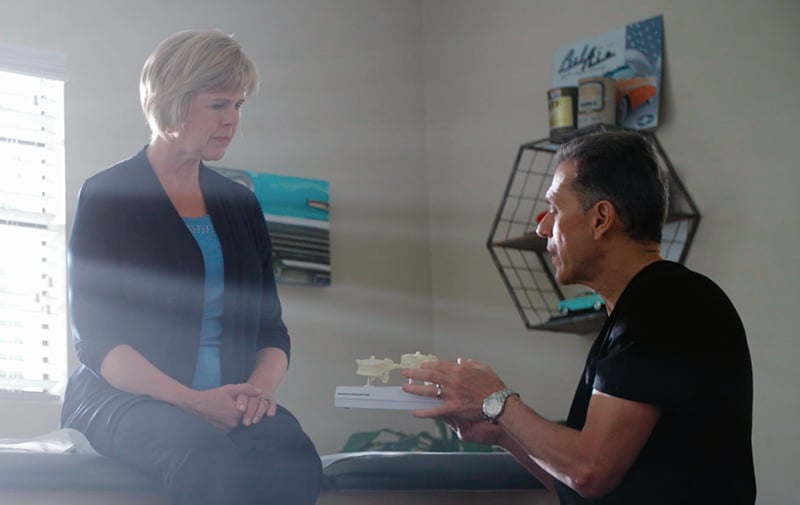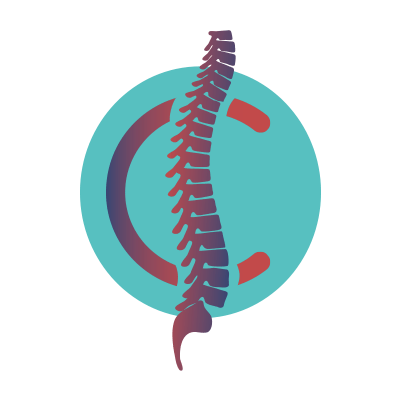Anterior Cervical Discectomy and Fusion
Our team at Citrus Spine Institute specializes in performing anterior cervical discectomy and fusion surgeries (ACDF). Learn how this procedure can help you find relief from neck pain and improve your quality of life.

What is an Anterior Cervical Discectomy and Fusion Surgery?
An anterior cervical discectomy and fusion (ACDF) is a surgical option designed to relieve pain, numbness, tingling, or weakness in the neck and arms that results from pressure on the spinal cord or nerve roots. This procedure is performed on the cervical (neck) region of the spine, and – depending on the extent of your condition – may be done at multiple levels in the spine.
Learn More About Anterior Cervical Discectomy and Fusion
Cervicalgia (neck pain) is a common problem that nearly 30% of people experience each year – and if yours is severe, chronic and accompanied by other symptoms such as numbness, tingling or weakness in the neck and arms, this could indicate a condition that makes you a candidate for ACDF.
ACDF procedures are typically used to treat bulging and/or herniated discs, degenerated discs and cervical stenosis – the narrowing of the spinal canal that compresses, pinches and crowds the spinal cord and nerves. These conditions can be caused by scoliosis, osteoarthritis, metastatic processes, traumatic injuries, inflammation, spondylolisthesis and spondylolysis.
With any neck or back pain, you will want to consult with a spinal specialist to determine the root cause and come up with a treatment plan that works for you.
This surgery is completed through an anterior approach – meaning that your surgeon will create an incision in the front left or right side of your neck to access the cervical (neck) region of your spine. The incision is usually horizontal, where your skin naturally creases, however it may be done vertically if you require an ACDF on multiple levels of your spine. After being put under general anesthesia, and the incision has been made, your surgeon will make a clear path to access your spine.
Using fluoroscopy (continuous X-ray), they will remove the entire herniated or damaged, degenerative disc between the vertebrae. Then, a bone graft, implant or cage is inserted into the empty space to prevent the disc space from collapsing, and may be held in place with plates and screws to strengthen and stabilize the area. During healing, your vertebrae will fuse with the bone graft, creating one solid bone where the disc used to be.
A key benefit of this approach is that it gives your surgeon direct access to and visualization of the affected disc. Because of this, patients have reported less post-operative pain from this method compared to the posterior approach as it relates to multi-level ACDF.
ACDF procedures are performed as an outpatient procedure, meaning that you can leave the same day as your procedure, shortly after it is complete. ACDF procedures take one to four hours, depending on how many discs are being removed.
Anterior Cervical Discectomy and Fusion Post-Operative Care
You may be wondering what to expect after your anterior cervical discectomy and fusion procedure. To aid in smooth recovery, your surgeon will give you some guidelines to follow:
- Avoid strenuous activities
- Don’t lift objects that weigh over five pounds
- Don’t turn your head sharply up, down or side-to-side
- Avoid bending over
- Don’t drive while on narcotic pain medications – you will also want someone to come with you to drive you home post-procedure
- Avoid being sedentary for extended periods of time
- Take walks regularly
- Don’t smoke or use tobacco products
- Don’t drink alcohol
- Don’t use non-steroidal anti-inflammatory drugs (NSAIDs), such as ibuprofen and aspirin, for six months minimum as these can interfere with bone healing
- Attend your physical therapy (if prescribed) and follow-up appointments
Your doctor may prescribe narcotic pain medications to help manage your pain along with a cervical collar to give your neck extra support as it heals over the next few weeks. They may also recommend you use ice packs to mitigate pain and switch to over-the-counter pain medications, like Tylenol, after you’re done with your prescription pain medications.
Recovery time varies depending on your unique case, however, many patients are able to resume regular daily activities within four to six weeks. Full recovery, where the fusion process is complete and the bone is healed, can take between 12 to 18 months.
With any surgical procedure, there is always some level of risk and side effects that may occur. General risks of surgery include infection, excessive bleeding, blood clots, poor healing, negative reactions to anesthesia, incision site soreness/pain and more.
Regarding anterior cervical discectomy and fusion surgery, some procedure-specific complications include:
- Nerve root or spinal cord damage
- Difficulty swallowing (dysphagia) and speaking
- Spinal fluid leakage
- Larynx, esophagus or trachea damage
- Pseudoarthrosis (fusion failure)
- Mechanical issues with the bone graft, plate and screws
- Arterial damage, which could lead to stroke, excessive bleeding or death
- Lack of symptom relief
- Hematoma/seroma leading to a compromised airway

The Citrus Spine Difference
At Citrus Spine Institute, our patients are our priority in everything we do. It’s our mission to empower and educate you so that you can go into your procedure with confidence.
01
02
03
Our team has performed thousands of successful spinal procedures, most of which use minimally invasive techniques.
04
We perform many kinds of spinal procedures, including ACDFs. Dr. Toumbis will work with you to determine the best treatment for your specific condition.
What to Know Before Anterior Cervical Discectomy and Fusion
Before spinal surgery, you will want to make sure you are in optimal health and prepared to the best of your ability. Ensure you have and maintain a healthy body weight and follow other health and wellness guidelines provided by your doctor. You may also want to take measures to prepare your home to help with a smooth recovery and lower your risk of injury.
Discuss the best ways to get ready for your ACDF procedure and any medications you are currently taking with your doctor, and follow their instructions for the best results. They will have recommendations and guidelines to get ready in the weeks leading up to your procedure.
Wondering If An Anterior Cervical Discectomy and Fusion Is Right for You?
The first step to discovering if an ACDF is the best procedure for you is to talk to a spinal specialist. One of our experienced healthcare providers will work with you to find an accurate diagnosis and ideal treatment plan for your unique condition. Schedule a consultation today to see if an ACDF procedure is right for you.



